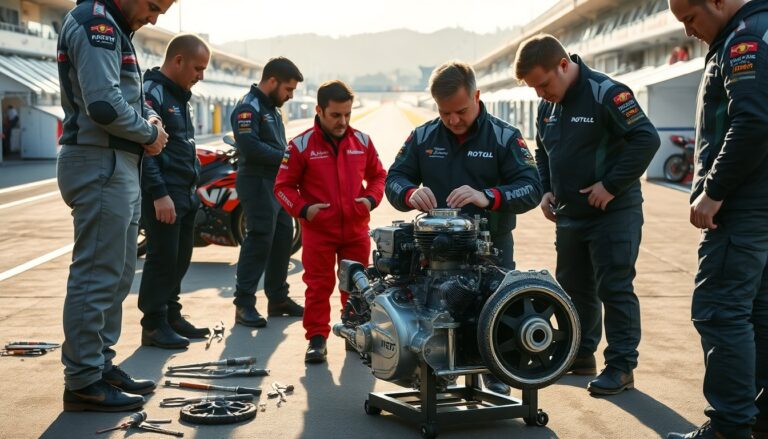Argomenti trattati
The world of MotoGP is on the verge of a significant transformation, particularly with the introduction of 850cc engines set for 2027. In preparation for this major shift, a freeze on engine specifications for 2026 has been enacted. This measure aims to manage costs and maintain competitive parity among the teams. The Grand Prix Commission has approved these changes, emphasizing the need for teams to utilize the 2025 engine versions while focusing on innovative projects for the future.
The decision to freeze engine development is strategic, designed to curtail expenses in a sport where financial pressures are ever-increasing. By limiting changes to existing engine specifications, MotoGP aims to level the playing field, allowing teams to concentrate their resources on new designs and technologies. The only exceptions to this freeze will be for safety and reliability reasons, as well as for manufacturers benefiting from Type D concessions. This approach allows for necessary modifications while preventing enhancements in performance that could disrupt the competitive balance.
Understanding the implications of the engine specifications freeze
Under the new guidelines, adjustments needed for safety, reliability, or unavailability of parts will be permitted across all teams, provided these changes do not lead to improved performance. This creates a unique dynamic in which manufacturers can address pressing needs without compromising the competitive integrity of the series. Teams under Type D concessions will not be bound by the engine specifications freeze unless they change their engine type, allowing them to continue their development without restriction.
As we transition to 2027, the introduction of 850cc engines will usher in a new era for MotoGP. This shift entails the prohibition of ride-height devices and holeshot devices, a comprehensive reevaluation of aerodynamics, and the mandate for 100% sustainable fuel. These changes represent a fundamental rethinking of the sport’s technological framework and its environmental responsibilities.
The future of MotoGP: challenges and opportunities
The impending move to 850cc engines signifies not just a regulatory change but a cultural shift within MotoGP. Teams will need to adapt to new performance metrics while navigating the challenges posed by these regulations. This evolution presents both challenges and opportunities for teams, manufacturers, and investors alike. Understanding how these changes will affect performance and team strategies will be crucial for stakeholders in the MotoGP ecosystem.
The focus on sustainability will also reshape the competitive landscape. Teams that invest in innovative technologies and sustainable practices are likely to gain a competitive edge, creating new avenues for investment and sponsorship. As the sport evolves, so too will the strategies that teams employ to maintain their competitive edge, making adaptability a key factor for success in the new MotoGP environment.
Conclusion: a new chapter for MotoGP
In conclusion, the freeze on engine specifications for 2026 and the upcoming introduction of 850cc engines in 2027 are set to redefine the MotoGP landscape. These changes will require teams to reassess their strategies, innovate in their designs, and adapt to new regulations that promote both competitiveness and sustainability. As we look forward to this exciting new chapter in MotoGP, it is clear that the evolution of engine specifications is not merely a technical adjustment but a cornerstone for the future of the sport.

